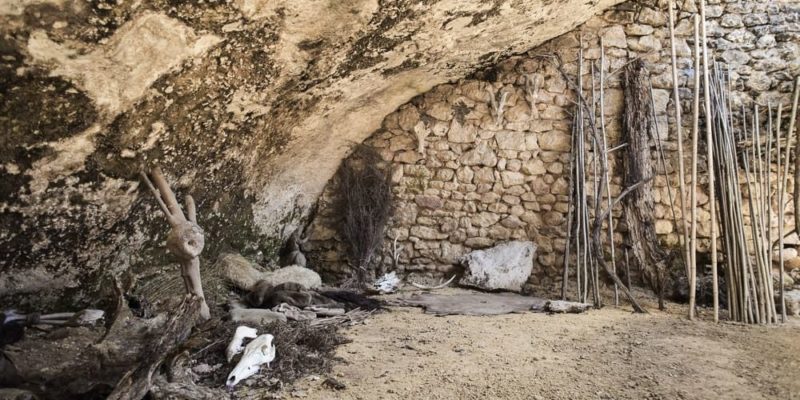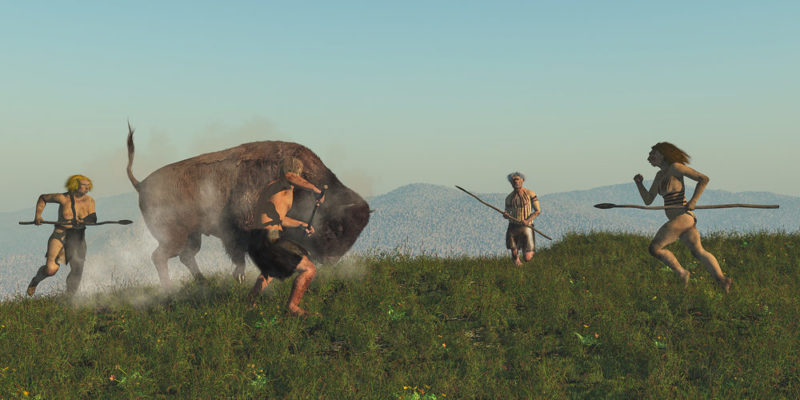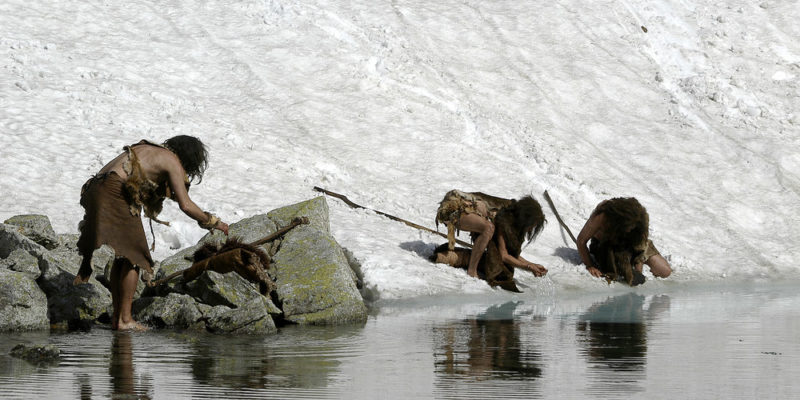We explain what the Cro-Magnon man was, what his way of life and food was like. In addition, their general characteristics and clothing.
What was the Cro-Magnon man?
A prehistoric population of European humans ( Homo sapiens ) that existed during the Upper Palaeolithic period (40,000 to 10,000 years ago) is known as Cro-Magnon man or Cro-Magnon man . His are the most representative fossil evidences , along with those of Neanderthal Man , of prehistoric humanity on that continent .
Cro-Magnon man was long assumed to be the prehistoric representative of the white (or Caucasoid) race. He was considered one of the three primitive types of humanity , along with the Grimaldi man (black or Negroid race) and the Chancelade man (yellow or Mongoloid race).
However, this theory is wrong and has been abandoned by historians and paleontologists today. Today it is accepted that "Cro-Magnon man" is simply synonymous with Homo sapiens in the Paleolithic .
Origin of the Cro-Magnon man
Humanity comes from the African continent , from which it migrated to the rest of the world. Around 43,000 a. This migration took him to Europe through the Near East and Eastern Europe.
Many of its main deposits were found in this region. It is estimated that in Europe he met Neanderthal man , with whom he lived and hybridized.
It is estimated that it also had conflicting relationships, which could indicate that Cro-Magnons played a role in the extinction of Neanderthals .
Meaning of Cro-Magnon

The term Cromañón is Castilianization Cro-Magnon , name of the cave in France that were found the first fossils of the Homo sapiens primitive. This name probably comes from the French words creux ("cave") and magne ("great"). That is to say, it means "big cave" or "great cavern".
Discovery of the Cro-Magnon man
The first fossils of Cro-Magnon man were found in 1869, in the homonymous cave in France , near Les Elyzies de Tayac-Sireuil, Dordogne. Its discoverer was the French geologist and paleontologist Louis Lartet. They consisted of three male adult specimens, one female and one fetus.
Cro-Magnon Man's way of life

Cro-Magnon man was nomadic , although it is very likely that he spent a good deal of time in his main settlements. They were moving to new ones due to food shortages , climate change, or clashes with enemy tribes.
Most of its deposits are in shallow or deep caves . It is also common to find primitive huts built in the open or carved into the rock.
They were powerful hunters and gatherers . Thanks, they used lithic technology, they made stone tools and weapons, such as spears and knives, with a significant degree of precision and fineness in their forms. They worked leather, used fire, and probably practiced some kind of primitive religion.
Cro-Magnon man feeding
The Cro-Magnon fossils and their artistic forms reveal that they hunted oxen, mammoths, and reindeer , suggesting that meat was an important part of their diet. In addition, this activity provided them with skins to make coats.
Harvesting made up for the rest of their diet with plant products such as fruits, leaves, and seeds. As the planetary temperature increased, with the end of the ice age, their diet became even more diversified.
Cro-Magnon Man's Garb

The hides and skins were a frequent clothing in primitive humanity. They were an effective shelter to face the freezing temperatures of the time. It could also help them protect themselves from animal attacks.
Often it exhibited decorations, paintings, and other interventions with probable ritual or decorative significance. Cro-Magnon clothing is precisely what we attribute to cavemen in contemporary imagination.
Physical traits of Cro-Magnon man
The Cro-Magnon man was robust, solid and heavy in body, ranging between 1.66 and 1.71 meters in height. They were considerably taller than the rest of the human species of the time.
Their forehead was straight, with little prominent ciliary arches, and they were the first humans to have a prominent chin. Their cranial capacity was slightly greater than that of modern humans (1,600 cc).
Cro-Magnon man culture

The Cro-Magnons developed a rich formal culture , compared to other hominids . It included the burial of the dead and some form of proto-religion. They had a form of painting and sculpture for artistic or ritual purposes.
Its cave paintings deserve special attention , such as those found in the Altamira Caves . They represent hunting scenes, forms of hands and totemic or sacred animals.
It is also common to find carvings and sculptures with anthropomorphic shapes , especially of female bodies in a state of pregnancy, which allows them to be associated with fertility rituals. Their culture religiously and aesthetically appreciated these productions, which exhibit a very important level of sophistication.
Extinction of the Cro-Magnon man
It is difficult to pinpoint what happened to the Cro-Magnons and when. Since they are Homo sapiens by law, it is likely that they became absorbed into later European populations , slowly disappearing into modern humanity.
Cro-Magnons and Neanderthals

Cro-Magnons shared time and habitat briefly with Neanderthal man . Despite their notable differences, it is very likely that they had relatively frequent contact.
There is evidence of hybridization between species . Furthermore, it can be assumed that the Cro-Magnons had some share of responsibility for the extinction of the Neanderthals. It could have been the product of open warfare or slow movement as the Cro-Magnons took away their hunting grounds and limited their access to food.
The greater capacity of phonation of the Cro-Magnon perhaps had a lot to do with it, allowing it a more complex language. The consequent more advanced degree of socialization could be a decisive element in the competition between the two species.
More recent studies from the 20th and 21st centuries have shown, however, that Neanderthals are genetically present in almost the entire world population (except sub-Saharan Africa). In other words, they had some kind of contribution in the history of our species.
The above content published at Collaborative Research Group is for informational and educational purposes only and has been developed by referring reliable sources and recommendations from technology experts. We do not have any contact with official entities nor do we intend to replace the information that they emit.
Abubakr Conner brings a diverse skill set to our team, and covers everything from analysis to the culture of food and drink. He Believes: "Education is the most powerful weapon that exists to change the world." .
Leave a reply
Your email address will not be published. Required fields are marked *Recent post

Sport: What Is It, Types, Risks, Features, Characteristics and Examples

Dogs: Emergence, Features, Characteristics, Feeding and Breeds

Story: Definition, Elements, Structure, Features and Characteristics

